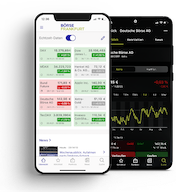Market sentiment: "All sails set"

The DAX rally continues and is primarily attributable to foreign investors.
Summary
According to the latest Bank of America survey of international fund managers, further shifts in equity exposure towards the eurozone have apparently taken place in recent weeks. On the other side of this demand are institutional investors, who have moved even further to the short side for the fifth time in a row, possibly also attracted by significantly rising share prices. In the meantime, 58% of those surveyed are betting on a falling DAX, which at the same time gained another 3.6% in the last reporting week alone. For Joachim Goldberg, the prospects for the DAX therefore remain good, especially as the stock market barometer could receive a further boost from an additional short squeeze.
19 February 2025. FRANKFURT (Goldberg & Goldberg). The fact that the DAX has once again made impressive gains since our last sentiment survey - we are talking about an increase of 3.6% in a point comparison - is probably primarily due to capital inflows from abroad. This is because our assumption is supported by the latest Bank of America survey of international fund managers, according to which not only did the cash ratio among the players surveyed fall to its lowest level in 15 years at 3.5% as a sign of great risk appetite. In the February survey published yesterday, a net 12% stated that they were overweight in eurozone equities. Although this is not a strikingly high figure per se, the change in exposure - in December, a net 25% of fund managers still stated that they were underweight in this sector - speaks for itself and is clear. If you also consider that the overweight in US equities fell by 19 percentage points during the same period, you can imagine what path the capital flows must have taken. Perhaps this may also have been one reason why the euro has so far not been affected by US President Donald Trump's “tariff threats”.
Dax rises, domestic sentiment falls
While international fund managers have recently shown a pronounced appetite for risk, this does not appear to apply to the institutional investors with a medium-term trading horizon that we surveyed. This is because our Börse Frankfurt Sentiment Index has fallen for the fifth time in a row, by 7 points to a new level of -26, with almost 90 percent of the increase in the bear camp coming from previously neutral investors who have probably positioned themselves on the short side in the event of rising prices. As a result, the proportion of neutral investors has fallen to its lowest level since April 29, 2020, at just 10% of all respondents. Bears account for 58% of investors, the highest level in the panel since the beginning of November 2023.
The Börse Frankfurt Sentiment Index also fell among private investors, dropping by 5 points to a new level of +3. While there were almost no changes among the investors surveyed via social media, the remaining private investors were drawn to the bear side, meaning that they are primarily responsible for the decline in the Sentiment Index. On balance, the sentiment gap between the two subgroups has widened slightly.
Shackled pessimists
Today's survey has also widened the sentiment gap between private and institutional investors. While the DAX has now strengthened by around 15 percent since the beginning of the year, sentiment among the latter has continued to deteriorate over the past five weeks. It should be noted that even during the past sentiment week, only very few players have closed short positions. Instead, the group of bears has continued to grow, but the sentiment index is not yet at an extreme.
However, it should be noted that the cost prices of the bearish exposures are now likely to have moved relatively far away from the current DAX level. This means that the first possible demand from the latest pessimists in the event of a DAX setback is likely to be in the range of 22,250 to 22,300 points, but the average cost price of the remaining short positions is likely to be considerably lower.
The situation for the DAX therefore remains favorable, especially as the pessimists - this has hardly happened so far - will have to pull the emergency brake at some point if the DAX continues to rise and could thus cause a proper squeeze. However, it is also true that in the event of a setback, as long as there is no further supportive demand from abroad, the domestic imbalances can probably only be covered halfway without losses at much lower prices - an estimated 5 percent lower than today (22,900).
by Joachim Goldberg
19 February 2025, © Goldberg & Goldberg für boerse-frankfurt.de
Videokommentar
Sentiment index of institutional investors

| Bullish | Bearish | Neutral | |
| Total | 32% | 58% | 10% |
| compared to last survey | +1% | +8% | -9% |
DAX (change from previous survey): 22,990 points (-790 points compared to the previous survey)
Börse Frankfurt Sentiment Index institutional investors: -26 points (-7 points compared to previous survey)
Sentiment index of private investors

| Bullish | Bearish | Neutral | |
| Total | 44% | 41% | 15% |
| compared to last survey | -1% | +4% | -3% |
DAX (change from previous survey): 22,900 points (-790 points compared to the previous survey)
Börse Frankfurt Sentiment Index institutional investors: 3 points ( -5 points compared to previous survey)
About the Börse Frankfurt Sentiment-Index
The Börse Frankfurt Sentiment Index ranges between -100 (total pessimism) and +100 (total optimism), with the transition from positive to negative values marking the neutral line.
More articles from this columnist
| Time | Title |
|---|






